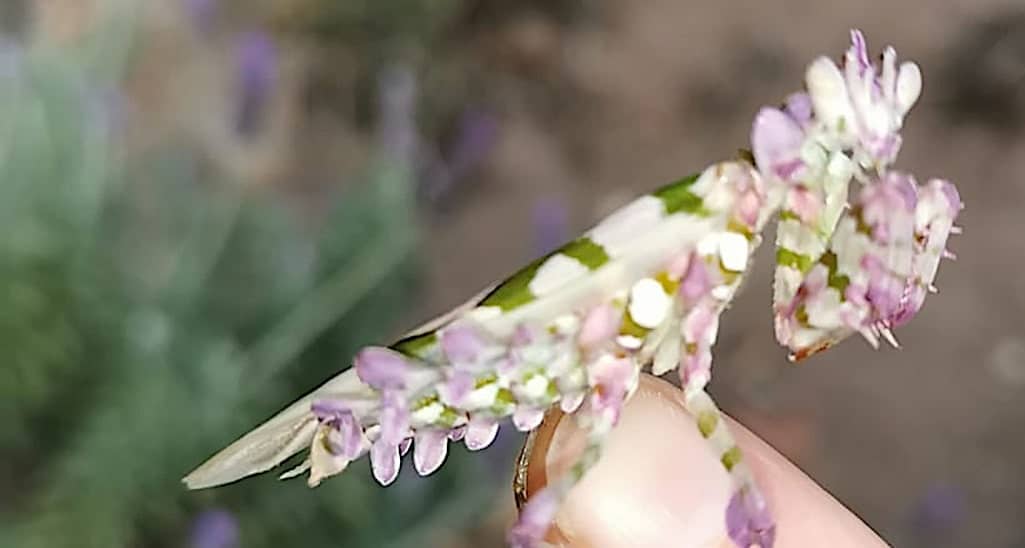Everyone loves to admire beautiful flowers, frolic around in their fragrance and cherish their vicinity. Well, what you might think is a flower could be a flower mantis.
Mantises are an order of insects. This order of the mantises comprises over 24000 species and 460 genera in around 33 families. Mantises can be found in several areas around the globe, ranging from tropical to temperate habitats and areas.
They can be identified with triangular-shaped heads, flexible necks, and a pair of building eyes. They may or may not have wings.
However, the bodily features and the structure of these mantises gave them the name of the ‘Praying Mantis.’ With enlarged and elongated forearms, adapted and made to grip easily and catch their prey, these long forearms remain folded when they are stationary. This gave rise to the commonly used name, the praying mantis.
The Flower Mantis
It is coming back to the beautiful creatures that are the flower mantis.
These are species of the praying mantis. The flower mantis play host to a beautiful yet ruthless disguise.
These little creatures camouflage into their surroundings, which are flowers as the name suggests. Disgusting extremely well among the flowers.
These beautiful creatures sit patiently, setting up an ambush, playing pretend as a flower, and sitting extremely still, luring in their prey. With several species and an extremely beautiful sight to look at, it is no wonder that the flower mantis is famous for being a pet to many.
The flower mantis has various types, mimicking different types of flowers all around the globe.
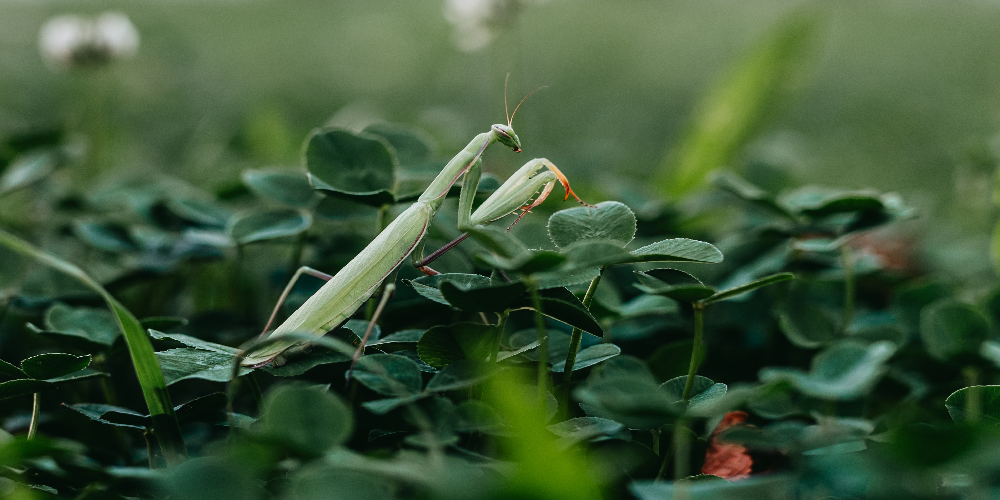
Also Read: Deep Cave Springtail
The Spiny Flower Mantis
The pseudocreobotra wahlbergii may look like a magic spell but trust me; it’s not. The pseudocreobotra wahlbergii, or put, a spiny flower mantis, is a rather small cousin to the praying mantis and a type of flower mantis.
The spiny flower mantis size of 1.5 inches, found in the Southern and Eastern African regions, both males and females look quite similar. An adult’s body has tiny spiny outgrowths under its abdomen, giving the mantis its name.
While the nymphs ( the immature or young form of a mantis) are typically black until the third instar (a developmental stage in the life of a mantis), the adults can be found in various colors.
They are typically green in shade and color but can also be found tinted in colors of pink, red and yellow. They have a large ‘eyespot’, an eye-like marking on its forewing. The eyespot is black, green, and cream and surrounded by a green patch. The outer hindwings are transparent, while the inner hindwings are orange in color.
The spiny flower mantis spread their forewings to appear larger to a predator.
It uses the eyespot on its forewing to startle the predators and try and assert their dominance that way.
They stay extremely still, mimicking the flower and camouflaged as they wait for their prey to approach. When prey comes to try and pollinate the flower, the mantis then quickly grans the prey and eats it.
Spiny flower mantis usually prefers flying insects and spiders but will essentially eat any insect it can if it comes to survival.
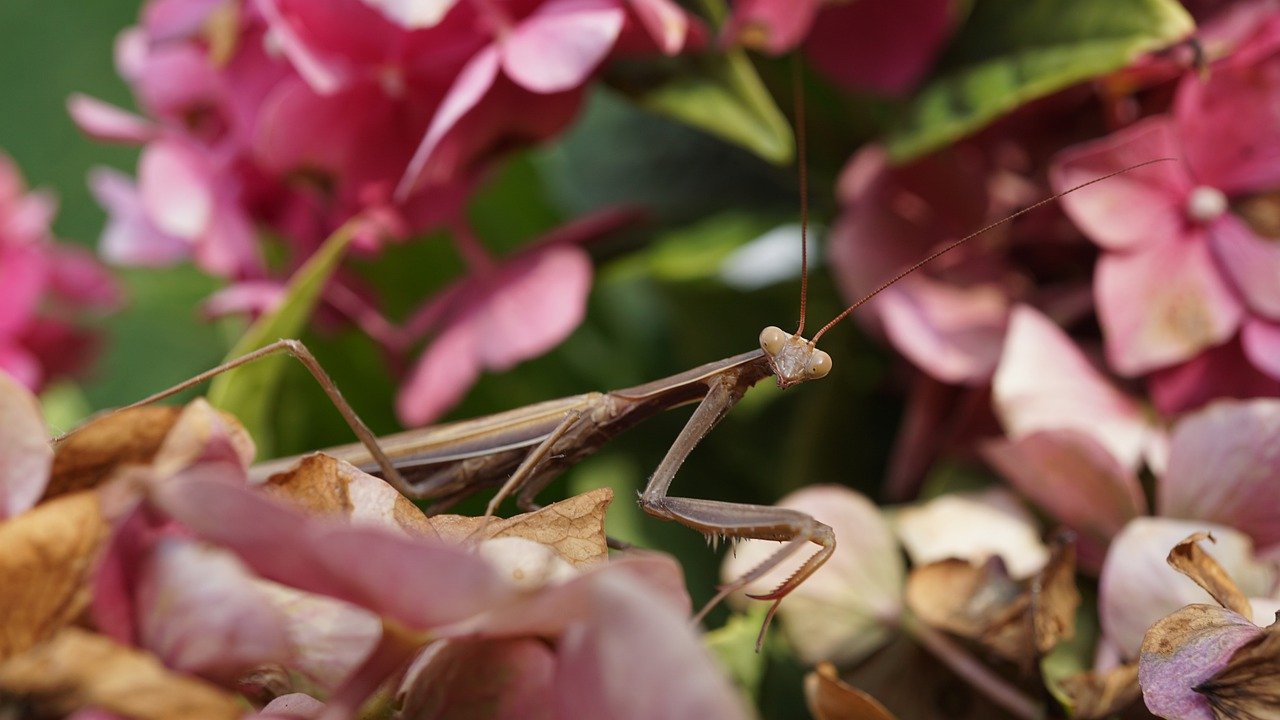
2) Devil’s Flower Mantis
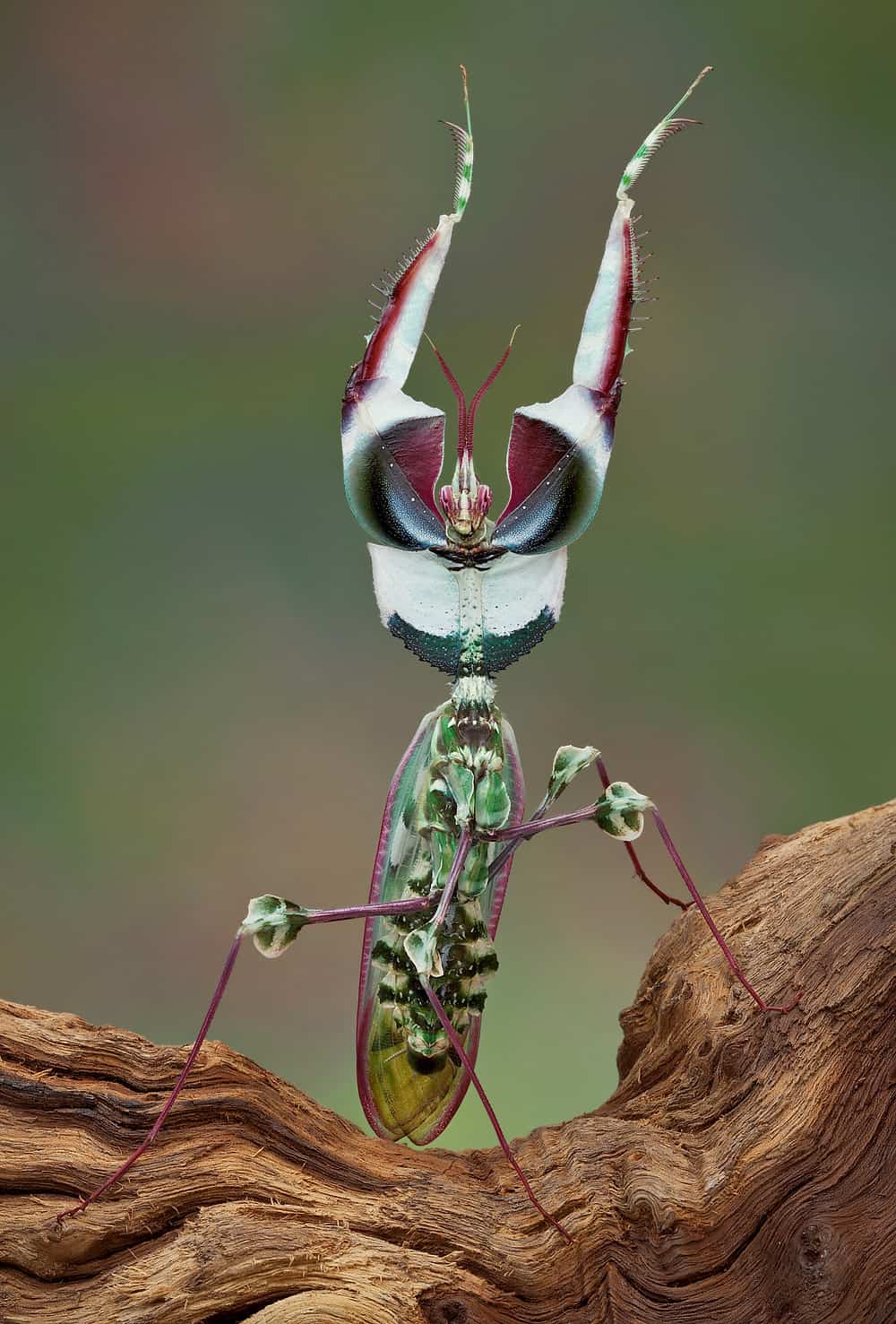
Idolomantis diabolical or the devil’s flower mantis or the giant devil’s flower mantis is a genus of the praying mantis belonging to the family of the Empusidae. These are one of the largest species of the praying mantis and are probably the largest species that mimic flowers.
The females grow up to 5.1 inches while the male grows up to 3.9 inches. They are found natively in areas Ethiopia, Malawi, Somalia, Tanzania, Kenya, Uganda, and South Sudan. It displays magnificent colors like red, white, blue, purple, and black as a way to blend well with the flowers in their natural habitat.
The basic anatomy and structure of the devil’s flower mantis are similar to the other Mantodea (the order to which the mantis belongs.), but it has its modifications to adapt to the flower mimicry of the flowers in its environment.
The head of the Idolomantis diabolical contains 3 vital organs. The compound eyes, antennae, and mandibles.
These photoreceptor cells enable good eyesight for mantis. The photoreceptors also help in giving them a 180-degree sight around them so they can look out for predators and prey while being still and won’t have to move their neck or their head around, keeping intact their camouflage.
The antennae serve the purpose of building their sensory perception. Protruding outwards, these antennas can detect and analyze the surrounding environment for specific chemicals, movement, and odors. The male has much more developed antennae than those of the females.
The mandibles are used to tear, grind and puncture food.
When confronted by a predator, they engage in a deimatic behavior, i.e., expand their wings to reveal the patterns on their body to distract and confuse their predator.
While impersonating a flower and luring in the prey, they remain still. However, when the prey makes its way into the striking zone of the mantis, i.e., an area within reach of the mantis to attack effectively, it uses the tibiae of its legs to grasp and maintain a strong grip on the prey.
The mandibles then come into play as they help in decapitating and devouring the prey. The Idolomantis diabolical usually prefers consuming airborne insects, like, specifically, flies, moths, butterflies, and beetles.

3) Jewelled Flower Mantis
The creobroter gemmatus are widely known by their common name, which is the Jewelled Flower Mantis. This species of the praying mantis is native to parts of Asia.
The males of this species grow up to the size of 1.5 inches ( 3.8cm), with the females being slightly larger. They have a lime green and a yellowish-green body with white markings on its body.
They are found in humid tropical, sub-tropical, and evergreen forests, with a high possibility of being found near human settlements. They prefer to live in humid environments and can spend up to 9 months in captivity.
The upper wings or the fore wings are deep green with two yellow eyespots on each wing. The eyespots are yellow and oval with black patches around them, which looks like an outline of sorts.
While they make look boring, merely a green mantis, when the inner wings are shown off, it could be while they try to intimidate and fluter their predators, a variety of bright and beautiful colors can be seen.
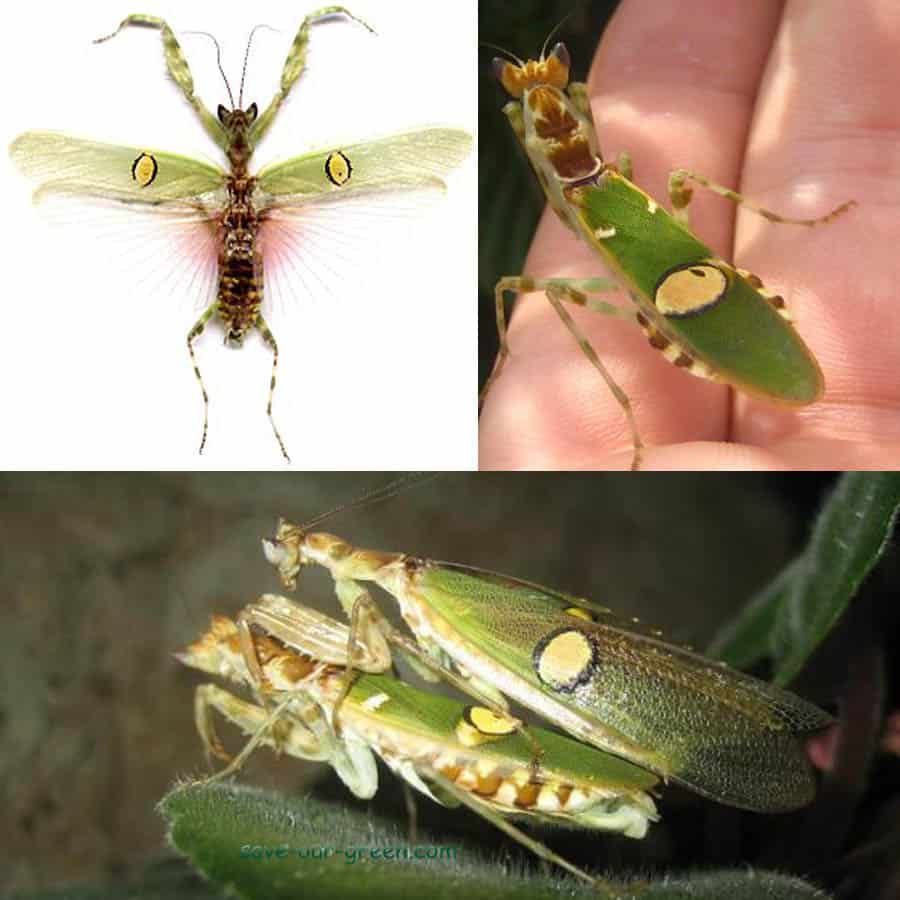
With a smiley-like decoration on its exterior wings and bright colors like pink colors being seen on its interior wings, it is no surprise that the Jewelled Flower Mantis is very common as a pet. They are further considered to be easy pets as, with good care, it is said that there is a 90% survival rate among the nymphs.
A fun fact about the Jewelled Flower Mantis is that they lay an important role in tropical forests. They maintain the equilibrium and balance in the ecosystem by keeping the insect population down.
Conclusion
Nature is beautiful. It is amazing how a small insect of a few inches can hold so much detail and responsibility. Being a part of several ecosystems, it is essential to know and understand how a flower mantis can play a significant part in keeping the environment balanced. These little creatures also hold so much detail in their appearances, their functioning, and their behavior.
If you’re a curious nature lover trying to delve deeper and look for new and interesting elements of our environment, then the flower mantis is just the right topic of research for you.
Or you could be someone who merely appreciates all things beautiful and want to get mesmerized by these beautiful and highly detailed insects; well, then the flower mantis is also the right pet for you.
Frequently Asked Questions (FAQs)
Q1) Are flower mantis poisonous?
Nope, these little devotees aren’t poisonous. Their bites do not contain any venom, so nothing to worry about. If you do get bitten, wash your hands thoroughly.
Q2) Where do flower mantis live?
They live in bushes, small trees, and several flower-producing plants. There are several species of the mantis spread all across the globe. They can be found in areas like the sub-Sahara to the humid trenches of the jungles. All they need is are a few flowers to camouflage and wait patiently for their next prey.
Q3) Can you have a flower mantis as a pet?
With over 2000 species of mantids, they range in various shapes and sizes. What does remain constant is how simple it is to care for them. They are fun, pretty and pretty calm, and easy to look after, making them a very easy pet. Due to their small size, even compared to the smallest of chihuahs! It is very easy to house them individually in small tanks.
Q4) Is there a flower mantis?
Yes! They may be difficult to find depending on the type of your residence or just difficult to find because they are camouflaged well!
Yes, flower mantis exist and may look like flowers if not examined carefully. Their ability to mimic flowers allows them to lure in their prey and capture and eat them while staying extremely still and looking pretty sitting on or next to a bunch of flowers.
